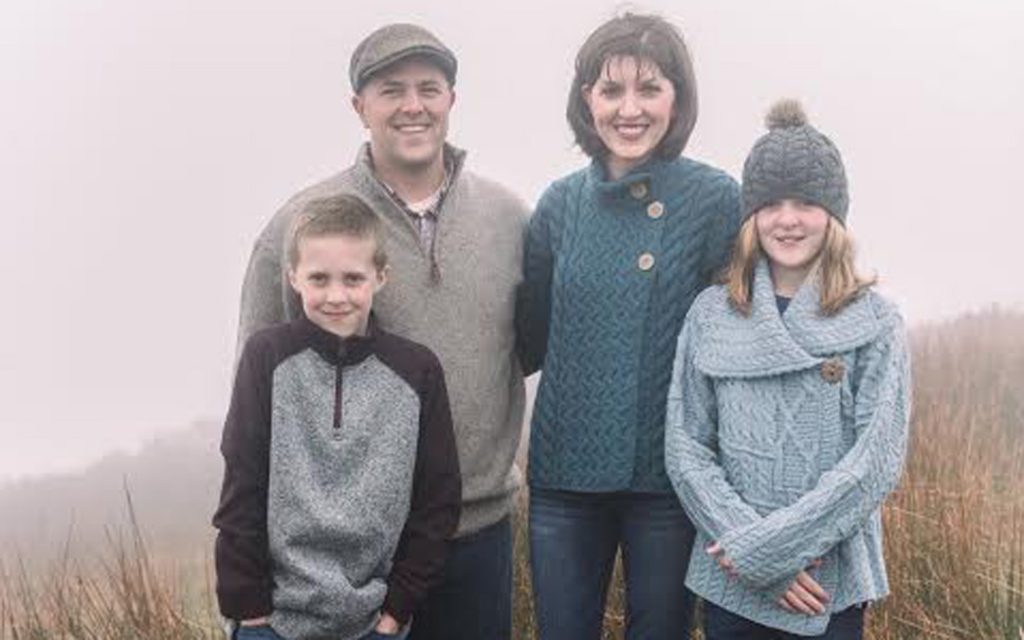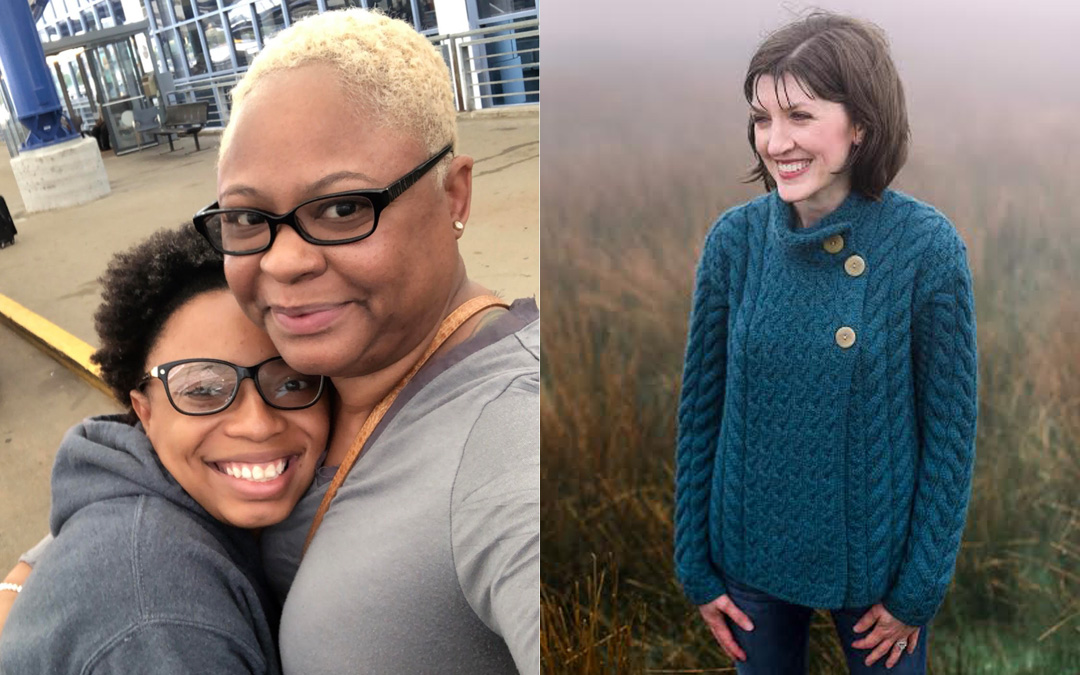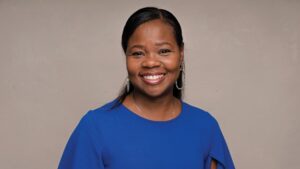Chawnte Randall is a mother, sister, daughter and friend. She is a U.S. Army veteran, health care management professional and gym junkie.
She is also living with metastatic breast cancer.
“I look like someone’s mother or aunt, because I am someone’s mother and aunt,” says Randall, 42, a Columbia resident whose only daughter is a senior at the Rochester Institute of Technology. “I want to change the perception and face of breast cancer. Many believe it’s just old women who get the disease, but it affects everyone.”
Erin Leland is a wife, daughter, sister, friend and mother to 11-year-old twins. She is a Towson University alumna, a high school English teacher in Howard County and a world traveler.
She is also living with metastatic breast cancer.
“I’m tired, but I feel good,” says Leland, 42 who lives in Ellicott City. “One of the biggest problems with this disease is people don’t necessarily think we are sick because many of us have our hair and are still working. But this disease affects women of all ages. We are young and old. It cuts people’s lives in half.”
Randall and Leland — both of whom tested negative for the BRCA gene and all other cancer-related genes — are new friends, brought together by the fight of their lives.
“We met at a peer support group meeting and realized early on we are both very passionate people,” says Leland. “We have become fast friends and offer a support for one another.”

Together, Randall and Leland, along with thousands of other brave women, are working to make their voices heard. Through advocating on Capitol Hill to attending a recent event where Baltimore’s City Hall was lit up in honor of those living with metastatic breast cancer, these women are raising awareness for the hundreds of thousands suffering from metastatic breast cancer, the terminal stage of the disease.
They are speaking out for the women and men who are playing the end-game of their journey, sharing the untold stories of breast cancer.
“We are the black sheep of the breast cancer community; everyone is afraid to talk about it,” says Randall. “Sixty-one percent of the country doesn’t know about metastatic breast cancer. Early detection works and has been effective, but now we need to start looking toward those of us who are dying for a cure. If we cure metastatic breast cancer, we have cured all breast cancer.”
‘Living My Best Life’
Randall was first diagnosed with Stage II breast cancer in October of 2017 after the nurse practitioner at her gynecologist’s office found a lump in her breast. Following the discovery, Randall got a mammogram and MRI.
A biopsy revealed her triple-negative breast cancer diagnosis, meaning the cancer she had was not fueled by estrogen and progesterone hormones or by the HER2 protein. She had a double mastectomy and reconstructive surgery, and went through nine out of her 16 rounds of chemotherapy. Randall had such severe numbness in her fingers and toes that doctors opted to stop chemotherapy early. They didn’t feel cutting treatment short would change her recurrence rate.
“For 11 months, I went off into the world and was living my best life,” Randall says. “Earlier this year, I had shortness of breath and a burning sensation in my chest area. I thought it was muscular due to my implant, and the doctors thought maybe I fractured a rib. But at 6 p.m. on March 28th, I learned I had a metastatic lesion on my sternum, and that is where my metastatic journey begins.”
Randall has what’s called oligometastatic breast cancer. That means she only has one metastatic lesion at a time. Since her diagnosis, she’s had three lesions that have been killed with targeted radiation treatments.
“I get scanned every 90 days unless I feel something in between,” Randall says. “If I have a muscle ache that lasts longer than seven days, I know I need to call my doctor. I live my best life in between my scans.”
For the last two years, Randall has done a photo shoot to chronicle her journey. She plans to do one each year.
“It’s wonderful to be able to see myself through a different light,” she says. “I get messages from women all the time about how they lack self-confidence, are having difficulties with their scars and struggling to get to know their new bodies post-reconstruction. These pictures display my pride and acceptance in who I am and the changes I have made.”
Memories to Last a Lifetime
Erin Leland is fighting the same disease as Randall, but her story is different. Leland’s journey began in 2008, when her twins – a girl and boy — were just six months old. Leland found a lump, went to her doctor for a mammogram and was diagnosed with Stage 0 ductal carcinoma in situ. Stage 0 means the cancer is still inside the milk duct.
She underwent two lumpectomies to make sure the cancer was completely removed, a month of radiation and was prescribed an oral medication to take for five years — all of which are standard protocol for her type of cancer.
Four-and-a-half years after her first bout, Leland felt another lump and had a mammogram, which detected nothing. She also had an ultrasound and an MRI. Those found a lump and a biopsy revealed a Stage I diagnosis.
“At that point, I wanted to be as aggressive as possible,’” Leland says. “Therefore, I opted for a double mastectomy, reconstructive surgery and four rounds of chemotherapy. After treatment I felt good, my hair was growing back and I thought I was cured, that my cancer was gone.”
For the next several years, Leland went through surveillance and her life went back to normal. Then, in 2018, four years after her second bout of breast cancer, Leland hit her back and remembers feeling an intense pain that later went away.
A few weeks later, she felt the same pain while laughing, and then another throbbing pain in her lower back after sneezing.
“I only felt the pain a couple of times and it was nothing alarming, but after the sneeze I went to my primary care doctor who ordered an X-ray to make sure I didn’t have a broken rib,” Leland recalls. “The next day, the doctor told me I had widespread metastatic disease — but still didn’t use the term metastatic breast cancer. I had a PET scan and will never forget the moment I got the results, which showed widespread cancer from my shoulders to my knees. But at that point, we still didn’t know what kind of cancer it was.”
Another biopsy resulted in a metastatic breast cancer diagnosis. Leland has since gone through numerous drug therapy treatments, some of which shrunk the cancer and gave her excellent scan results. But last month, she was told she has two tumors in her liver.
“I always knew I could have another bout of breast cancer in the chest or breast wall, but I didn’t know about this,” Leland says. “I didn’t know about breast cancer cells in other organs and I feel like I was blindsided. I wish I had been better prepared to know this was a possibility.”
Leland and her family are now living day by day, making the most of their time together. They are making memories through vacations, which have included trips to Tennessee, Canada and Ireland. Her twins, age 11, also spend one week each summer at Camp Kesem, which means magic in Hebrew. The camp is for children impacted by a parent’s cancer.

“This has taught us to stop and enjoy life because nothing is guaranteed,” Leland says through choked-back tears. “But my kids know the seriousness of this, as one of their camp friends recently lost her father to cancer. It sucks that I will be absent from my children’s lives. But I am writing them cards for their birthdays and other milestones because I am a card sender.
“Even in a world where people send birthday texts, I still send greeting cards. If I were alive for their birthdays, first jobs, engagements, weddings and babies, I would be sending my kids cards. This way, they will still receive cards from me in my own handwriting.”
‘No One Knows About It’
One-hundred-and sixteen people die from metastatic breast cancer every day, but only 2-3 percent of funds raised for breast cancer research is focused on research for patients whose cancers have already metastasized, according to METAvivor. METAvivor is the only metastatic breast cancer research, support and awareness organization to donate 100 percent of its proceeds to metastatic breast cancer research.
“There is this false sense that prevention is key, and it’s not,” says Leland, who has raised more than $15,000 for METAvivor. “Just getting mammograms doesn’t mean you won’t get breast cancer again. This disease is killing so many people, and no one knows about it. If you cure us, you cure everyone.”
The numbers indicate that approximately 150,000 people in the United States live with metastatic breast cancer, but that number doesn’t include people like Leland and Randall because they were initially diagnosed with an earlier stage of breast cancer.
“We aren’t counted properly,” Randall says. “Thirty percent of patients who have early-stage breast cancer will eventually become metastatic, but right now none of those patients are accounted for in the statistics. At the moment, it’s only required to report those who are metastatic at initial diagnosis.”
Leland and Randall are now using their experiences to “advocate for those who are no longer in the position to use their voices.” They are lobbying for federal lawmakers to pass bills that would take small steps toward better care. (Bill H.R. 2178/S. 1374 and Bill H.R. 1730/S. 741 both have bipartisan support.)
“As long as I am able to physically use my voice, I want to bring attention to these issues that affect me and my daughter,” Randall says. “This may not help me and I may not get a cure, but if it helps someone else I can feel good about what I have done. I want to leave a lasting legacy and positive impact. I look back on my life, and even though it’s short, I’m proud of what I have done.
“I’m not ready to die, but I’m not afraid to. So until then, I plan to live every day to the utmost.”





